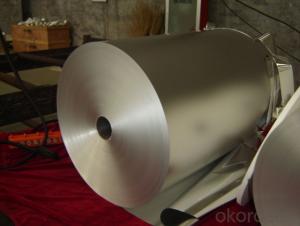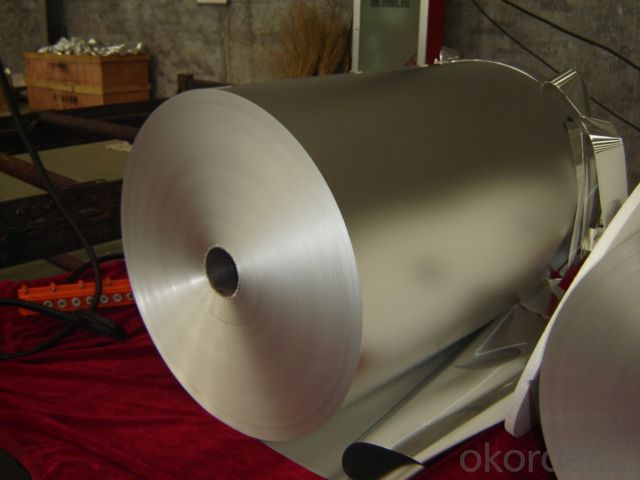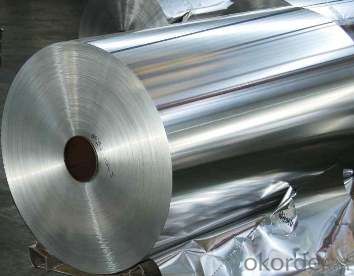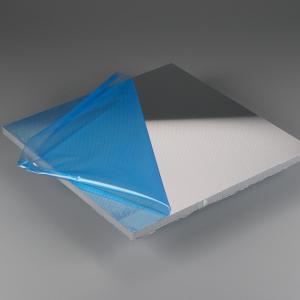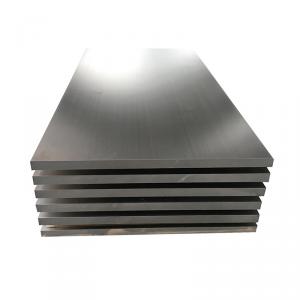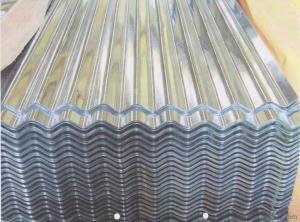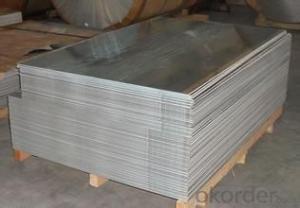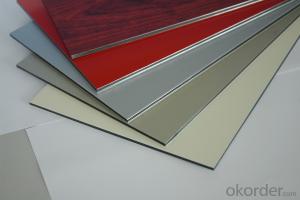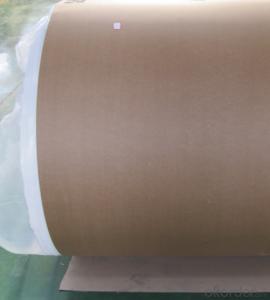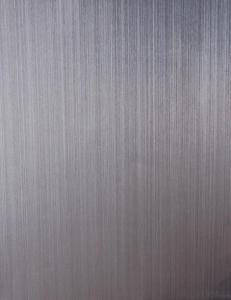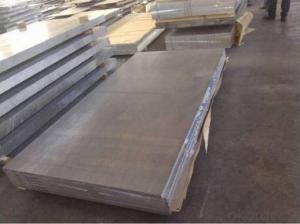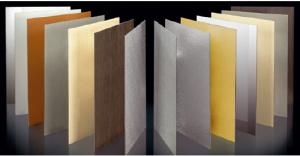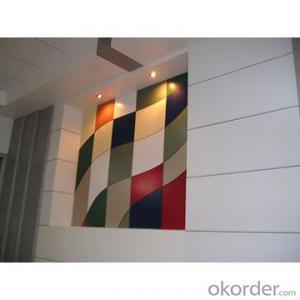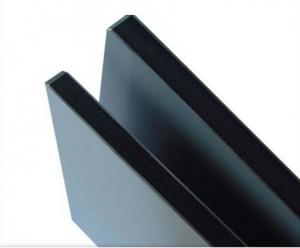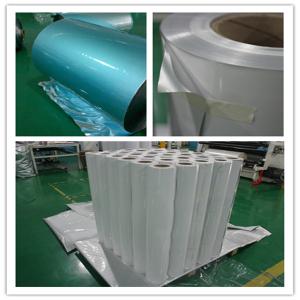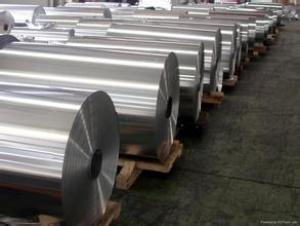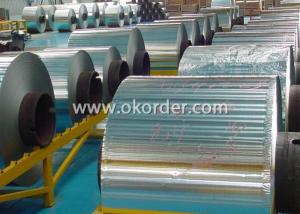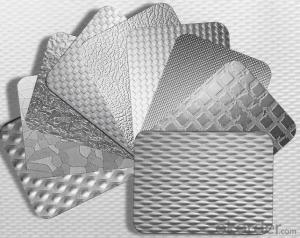Aluminum Trailer Siding Sheets Canada - Polyethylene (PE) Composite with Aluminium Foil and Paper
- Loading Port:
- Shanghai
- Payment Terms:
- TT OR LC
- Min Order Qty:
- 1 m.t.
- Supply Capability:
- 1000 m.t./month
OKorder Service Pledge
OKorder Financial Service
You Might Also Like
Specification
Polyethylene(PE) Composite with Aluminium Foil and Paper
1) Structure of PE Composite with Aluminium Foil and Paper Description:
Polyethylene (abbreviated PE) or polythene (IUPAC name polyethene or poly(methylene)) is the most common plastic. PE is a excellent comprehensive properties of polymer thin film materials, it is with polyester as the main raw material, after drying, melting, extruding and casting, biaxial stretching, heat setting, rolling, cutting and made.
PE primary use is in packaging (plastic bag,plastic films, geomembranes, containers including bottles, etc.). Many kinds of polyethylene are known, with most having the chemical formula.
PE has the characteristics of high mechanical strength, good rigidity, strong toughness, excellent electrical insulation properties, transparent, high gloss, non-toxic, odorless, tasteless, resistance to abrasion, folding, pinhole resistant and anti tearing etc.
2)Main features of the PE Composite with Aluminium Foil and Paper:
. Flexible and durable
. Light and easy to transport
. Fast delivery
. Item shipped from Dubai warehouse
3)PE Composite with Aluminium Foil and Paper Images:

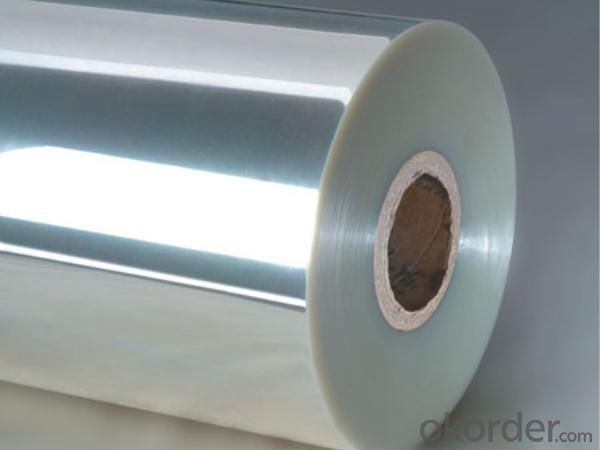
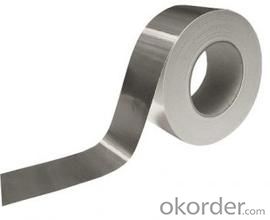
- Q: What are the different types of surface treatments available for anodized aluminum sheets?
- For anodized aluminum sheets, there exists a range of surface treatments that can enhance the appearance, durability, and functionality of the material. One option is the brushed finish, which involves using abrasive materials to create parallel lines on the sheet. This technique gives the aluminum a matte appearance and effectively conceals scratches and fingerprints. Another treatment is the mirror finish, achieved through polishing the sheet to create a high gloss, mirror-like reflection. This finish is commonly used for decorative purposes and provides a sleek and modern look. Etching is a process in which chemicals or abrasives are used to remove a thin layer of the anodized coating, creating a textured or patterned design on the sheet. This technique allows for customization and unique aesthetics. Powder coating is a popular treatment in which a dry powder is electrostatically applied to the anodized aluminum sheet and then cured under heat. This creates a durable and customizable coating in terms of color, texture, and finish. For a smooth, brushed appearance, satin finish involves sanding the aluminum sheet with fine grit sandpaper. This finish gives the surface a subdued and elegant look. Mechanical finishes encompass various techniques like polishing, buffing, or grinding to achieve different textures and finishes. The final result can range from smooth and glossy to rugged and textured, depending on the desired effect. Chemical treatments such as anodizing, chromating, or chemical brightening can enhance the corrosion resistance, color, and overall appearance of the aluminum sheet. They also improve the adhesion of paints or adhesives to the surface. It is important to consider that the availability of these surface treatments may vary depending on the manufacturer and specific requirements. Consulting with the supplier or manufacturer is recommended to determine the most suitable treatment for your application.
- Q: Is it possible to utilize aluminum sheets in the construction of high-rise buildings?
- <p>Yes, aluminum sheets can be used in high-rise buildings. They are valued for their lightweight, high strength, and resistance to corrosion. Aluminum is often used in curtain walls, window frames, and roofing due to its durability and recyclability. It also offers design flexibility and can be easily shaped and joined, making it suitable for modern architectural designs. However, it's important to ensure that the aluminum used meets the specific building codes and safety standards for high-rise construction.</p>
- Q: What are the different finishes available for aluminum sheets?
- There are several different finishes available for aluminum sheets, each with its own unique characteristics and benefits. Some of the most common finishes include: 1. Mill finish: This is the most basic finish for aluminum sheets, characterized by a smooth, shiny surface. It is typically achieved by passing the aluminum through a rolling mill, leaving it with a natural appearance. Mill finish is often preferred for industrial applications where aesthetics are not a primary concern. 2. Anodized finish: Anodizing is an electrochemical process that adds a layer of oxide to the surface of the aluminum sheet, providing enhanced durability and corrosion resistance. Anodized finishes can range from clear to various colors, and they can also be dyed to achieve specific hues. 3. Brushed finish: This finish is achieved by brushing the aluminum sheet with abrasive materials, creating a pattern of fine lines on the surface. Brushed finishes offer a distinctive, textured appearance and are commonly used in architectural and decorative applications. 4. Polished finish: Polishing aluminum sheets involves buffing the surface to a high shine, resulting in a mirror-like, reflective finish. This finish is often chosen for decorative purposes, such as in interior design, automotive detailing, or jewelry making. 5. Embossed finish: Embossing involves creating raised patterns or designs on the surface of the aluminum sheet, adding texture and visual interest. It can be achieved through various methods, such as roll embossing or stamping, and is commonly used for decorative purposes or to improve grip on certain applications. 6. Powder-coated finish: Powder coating is a process where a dry powder is applied to the aluminum sheet and then cured under heat, creating a tough, durable, and attractive finish. Powder-coated finishes come in a wide range of colors and provide excellent resistance to fading, chipping, and scratching. These are just a few examples of the different finishes available for aluminum sheets. The choice of finish will depend on the specific requirements of the application, such as aesthetics, durability, and functionality.
- Q: Can aluminum sheets be formed into seamless tubes or pipes?
- Seamless tubes or pipes can indeed be created from aluminum sheets. This is commonly achieved by employing a technique known as extrusion, in which the aluminum sheet is heated and compelled through a die to acquire the desired form. The extrusion process enables the production of seamless tubes or pipes that possess uniform dimensions and a polished surface. Due to its exceptional versatility and malleability, aluminum is an ideal material for numerous applications necessitating lightweight and corrosion-resistant tubing.
- Q: What are the potential environmental issues that arise from the use of aluminum sheets?
- <p>Yes, there are environmental concerns related to using aluminum sheets. The production process is energy-intensive and contributes to greenhouse gas emissions. Additionally, the mining of bauxite, the primary source of aluminum, can lead to deforestation and habitat destruction. The disposal of aluminum waste can also lead to pollution if not properly managed. However, aluminum is highly recyclable, which can mitigate some of these concerns if recycling practices are adopted widely.</p>
- Q: What is aluminium plate for?
- Two outdoor and indoor, outdoor curtain wall decoration, indoor ceiling (such as aluminum pinch plate, aluminum grille, aluminum hanging tablets, etc.), color diversity, but also can be made imitation wood grain, imitation marble and other colors, widely used
- Q: What are the different methods of polishing aluminum sheets?
- There are several different methods available for polishing aluminum sheets, each with its own advantages and disadvantages. Some of the common methods include: 1. Mechanical polishing: This method involves using abrasive materials, such as sandpaper or abrasive pads, to manually rub the surface of the aluminum sheet. This process requires a lot of physical effort and can be time-consuming, especially for larger sheets. Mechanical polishing can achieve a high level of shine and smoothness, but it may leave behind scratches or marks if not done carefully. 2. Chemical polishing: Chemical polishing involves using chemical compounds to dissolve a thin layer of the aluminum surface, resulting in a smoother and shinier finish. This method is often used for larger sheets or complex shapes where mechanical polishing is not feasible. However, it requires careful handling of chemicals and may not be suitable for all types of aluminum alloys. 3. Electropolishing: This is an electrochemical process that uses an electric current to remove a thin layer of material from the aluminum surface. Electropolishing provides a smooth and shiny finish and can be used for both small and large sheets. It is particularly effective for removing surface imperfections and achieving a uniform appearance. However, it requires specialized equipment and expertise to ensure proper control of the process. 4. Vibratory finishing: In this method, the aluminum sheets are placed in a vibratory machine along with abrasive media, such as ceramic or plastic chips. The constant movement and friction between the sheets and the media help to remove surface imperfections and achieve a polished finish. Vibratory finishing is suitable for large batches of sheets and can be a cost-effective option. However, it may not provide the same level of shine as other methods. 5. Buffing and polishing compounds: These compounds are applied to the surface of the aluminum sheets and then buffed using a rotary tool or polishing machine. The compounds contain abrasive particles that help to remove scratches and bring out the shine in the metal. This method is relatively quick and easy to use, but it may not be as effective for heavy oxidation or deep scratches. Overall, the choice of polishing method depends on factors such as the size and type of the aluminum sheets, desired level of shine, and available equipment and expertise. It is recommended to test different methods on a small area before proceeding with the full polishing process to ensure satisfactory results.
- Q: Can aluminum sheets be anodized with custom designs?
- Indeed, custom designs can be incorporated into aluminum sheets through anodization. Anodization, an electrochemical procedure, fortifies the inherent oxide layer on aluminum surfaces, rendering them sturdier and more resistant to corrosion. Throughout this process, diverse patterns and designs can be introduced onto the aluminum sheet by masking specific areas and exposing others to the anodizing solution. This grants the opportunity for personalized designs to be etched or dyed onto the surface, resulting in distinctive and individualized finishes. Anodized aluminum sheets with custom designs find widespread application across various industries, including architecture, automotive, and electronics, in order to fulfill both aesthetic and functional prerequisites.
- Q: Can aluminum sheet be used for electrical grounding applications?
- Indeed, aluminum sheet finds utility in electrical grounding applications. It possesses remarkable conductive properties, rendering it apt for employment in grounding systems. Its low resistance and exceptional electrical conductivity make it a common choice in diverse electrical applications. With the capability to proficiently transport electrical current and securely disperse it into the ground, aluminum sheet guarantees the safeguarding of electrical systems and averts potential electrical dangers. Moreover, the lightweight and corrosion-resistant attributes of aluminum establish it as a favored option for grounding applications across numerous industries, encompassing construction, automotive, and aerospace.
- Q: Explain how the use of aluminum sheets can impact the visual appeal of a building.
- <p>Aluminum sheets can significantly enhance the aesthetic appearance of a building due to their versatility, durability, and modern look. They offer a sleek and contemporary design, available in various colors, finishes, and textures, allowing architects to create unique and visually striking facades. Their resistance to corrosion and weathering ensures that the building maintains its appearance over time, while their lightweight nature can contribute to innovative architectural designs. Additionally, aluminum sheets can be easily shaped and cut, enabling complex and intricate designs that add to the visual appeal of the structure.</p>
Send your message to us
Aluminum Trailer Siding Sheets Canada - Polyethylene (PE) Composite with Aluminium Foil and Paper
- Loading Port:
- Shanghai
- Payment Terms:
- TT OR LC
- Min Order Qty:
- 1 m.t.
- Supply Capability:
- 1000 m.t./month
OKorder Service Pledge
OKorder Financial Service
Similar products
Hot products
Hot Searches
Related keywords
